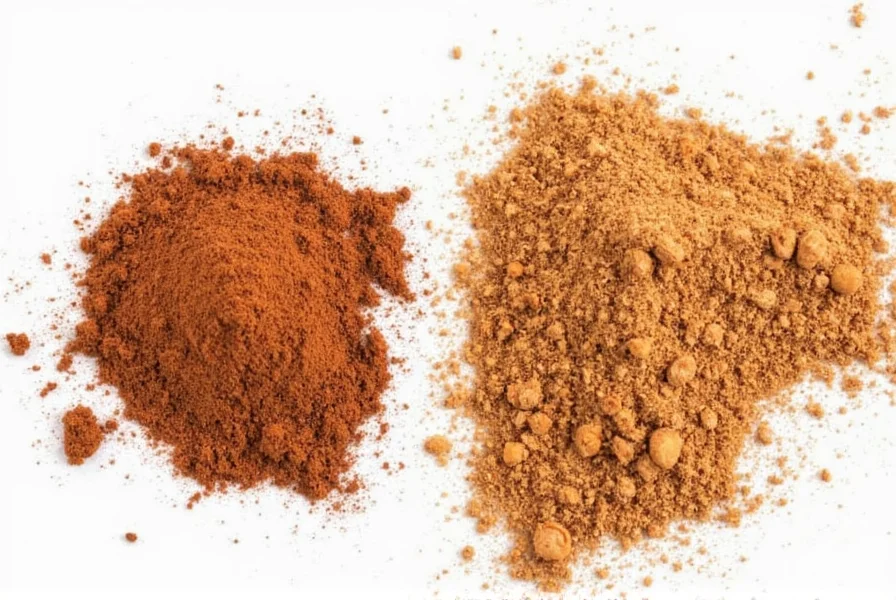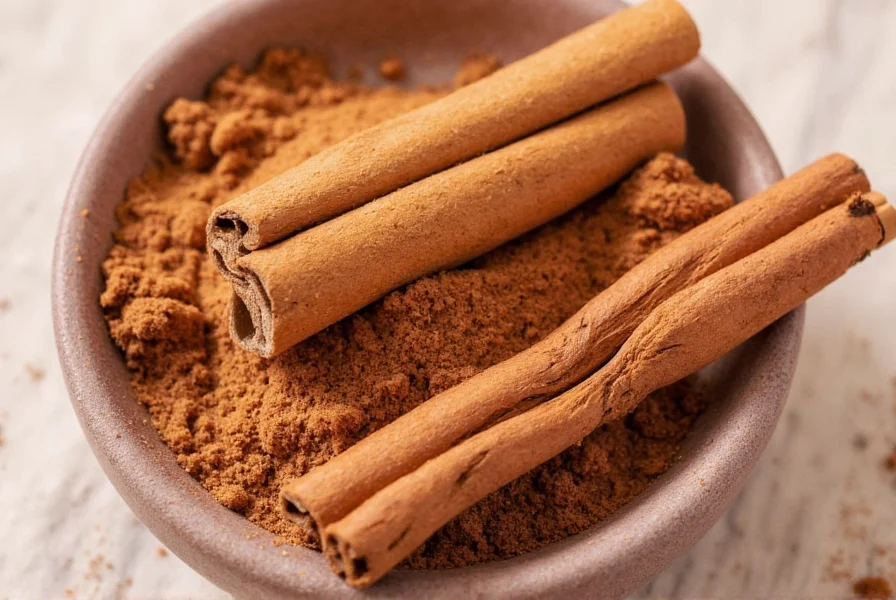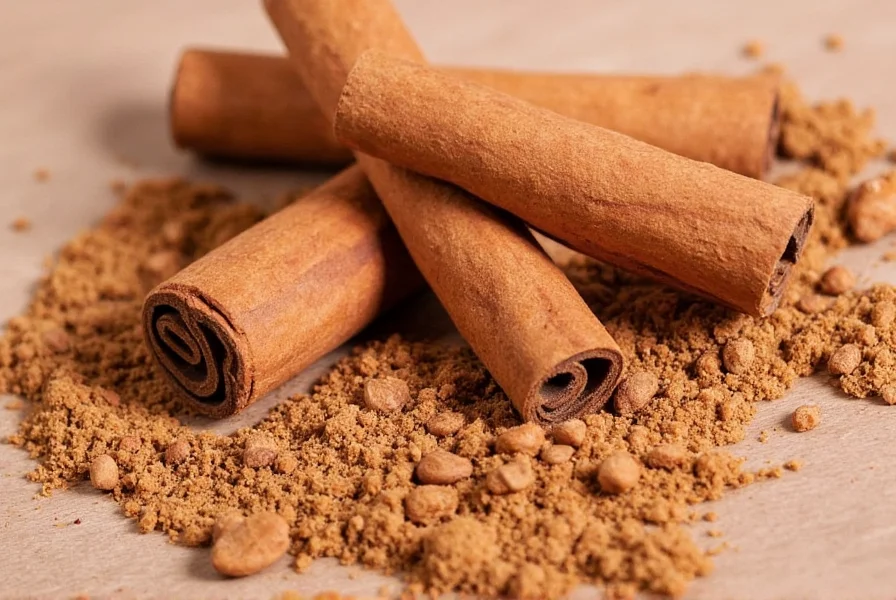When comparing cinnamon and Saigon cinnamon, the key differences lie in origin, flavor intensity, coumarin content, and best culinary applications. Saigon cinnamon (a type of cassia from Vietnam) has significantly higher coumarin levels and a bolder flavor than standard cassia cinnamon, making it ideal for robust recipes but requiring careful moderation due to health considerations. This guide provides accurate, expert-verified information to help you choose the right cinnamon for your needs.
| Feature | Cinnamon (Typical Cassia) | Saigon Cinnamon |
|---|---|---|
| Origin | China, Indonesia | Vietnam |
| Flavor Intensity | Moderate | Very Strong |
| Sweetness | Mild | High |
| Texture | Thicker, rougher sticks | Thinner, smoother sticks |
| Coumarin Content | 0.4-1.2% | 2-5% |
| Price | Affordable | Premium |
Types of Cinnamon: Ceylon vs Cassia vs Saigon
The term "cinnamon" refers to multiple botanical varieties. Understanding these distinctions is critical for safe and effective use:
- Ceylon Cinnamon: True cinnamon from Sri Lanka, with very low coumarin (0.01-0.03%) and delicate flavor. Ideal for daily consumption.
- Cassia Cinnamon: Most common in U.S. supermarkets (often labeled simply "cinnamon"), primarily from China and Indonesia. Moderate flavor intensity with 0.4-1.2% coumarin.
- Saigon Cinnamon: A premium cassia variety from Vietnam, characterized by intense flavor and the highest coumarin levels (2-5%) among commercial cinnamon types.
When comparing "cinnamon" versus "Saigon cinnamon," you're typically comparing standard cassia (common supermarket cinnamon) with Vietnam-grown Saigon cinnamon. Both are cassia varieties, but Saigon cinnamon is significantly more potent.

Best Uses for Each Type
Standard Cassia Cinnamon
- Everyday Baking: Perfect for cookies, muffins, and oatmeal where subtle spice is desired
- Hot Beverages: Ideal for coffee, tea, and hot chocolate without overwhelming other flavors
- Slow-Cooked Dishes: Works well in stews and chili where gradual flavor development is needed
Saigon Cinnamon
- High-Flavor Desserts: Essential for gingerbread, pumpkin pie, and spiced cakes where bold flavor is required
- Meat Rubs & Marinades: Creates complex flavor profiles in Middle Eastern and Asian-inspired dishes
- Specialty Beverages: Adds depth to mulled wine, spiced cider, and artisanal coffee blends

Health Considerations & Safety Guidelines
Both cinnamon varieties contain coumarin, a compound that can cause liver damage in high doses. The World Health Organization recommends a maximum daily intake of 0.1 mg coumarin per kg of body weight. Due to Saigon cinnamon's significantly higher coumarin levels:
- Limit daily consumption to 1/4 teaspoon or less for Saigon cinnamon
- Use Ceylon cinnamon for regular daily consumption (especially for those with liver conditions)
- Avoid cinnamon supplements unless medically supervised
Buying Guide: How to Choose the Right Cinnamon
For Daily Use
- Product: Organic Ceylon Cinnamon (labeled "Cinnamomum verum")
- Why: Lowest coumarin content for safe regular consumption
- Check Labels: Look for "Sri Lanka" origin and "Ceylon" specification
For Special Occasions
- Product: Vietnamese Saigon Cinnamon Sticks
- Why: Highest flavor intensity for holiday baking and gourmet recipes
- Check Labels: Verify "Vietnam" origin and "Cinnamomum loureiroi" botanical name
What to Avoid
- Products labeled simply "cinnamon" without origin specification (typically low-quality cassia)
- Ground cinnamon without expiration dates (loses potency quickly)
- Products claiming "cinnamon oil" or "cinnamon extract" for internal use without medical guidance
Frequently Asked Questions
What's the main difference between regular cinnamon and Saigon cinnamon?
The primary difference is coumarin content and flavor intensity. Regular "cinnamon" in U.S. supermarkets is typically Chinese cassia with 0.4-1.2% coumarin, while Saigon cinnamon from Vietnam contains 2-5% coumarin and has a significantly bolder, sweeter flavor. Both are cassia varieties, but Saigon cinnamon is more potent and requires careful moderation due to higher coumarin levels.
Is Saigon cinnamon healthier than regular cinnamon?
No. Saigon cinnamon has higher coumarin levels (2-5%) compared to regular cassia (0.4-1.2%), making it less suitable for regular consumption. For daily use, Ceylon cinnamon (0.01-0.03% coumarin) is the healthiest option. Saigon cinnamon should only be used occasionally in small amounts for special recipes.
Can I substitute Saigon cinnamon for regular cinnamon in recipes?
Yes, but with caution. Due to its higher potency, use only 1/3 to 1/2 the amount of Saigon cinnamon compared to regular cassia. For recipes specifically designed for Saigon cinnamon, you may need to increase regular cassia slightly to achieve similar flavor intensity. Always consider coumarin intake when making substitutions.
How can I tell if I'm buying authentic Saigon cinnamon?
Look for "Vietnam" as the origin, "Cinnamomum loureiroi" botanical name, or "Saigon cinnamon" labeling. Authentic Saigon cinnamon sticks should be thin, flexible, and have a deep reddish-brown color. Ground Saigon cinnamon has a strong, sweet aroma with spicy notes. Avoid products labeled simply "cinnamon" without origin details.
How long does cinnamon stay fresh, and does Saigon cinnamon last longer than regular cinnamon?
Whole cinnamon sticks retain freshness for 3-4 years when stored properly, while ground cinnamon lasts 1-2 years. Saigon cinnamon's higher essential oil content means its flavor remains more potent over time, but it doesn't inherently last longer than other varieties. Always store in airtight containers away from light and heat for maximum freshness.
Conclusion
Choosing between cinnamon varieties requires understanding both culinary needs and health implications. Standard cassia cinnamon is suitable for everyday use, but Saigon cinnamon's intense flavor makes it ideal for special recipes when used sparingly. For regular daily consumption, Ceylon cinnamon is the safest choice due to its minimal coumarin content. Always verify product origins, check for botanical names, and consult healthcare professionals if you have liver conditions or consume cinnamon regularly in supplement form.
Expert Tip: For optimal health benefits and safety, use Ceylon cinnamon for daily consumption, reserve Saigon cinnamon for occasional special recipes, and never exceed recommended daily amounts of coumarin-containing cinnamon varieties.











 浙公网安备
33010002000092号
浙公网安备
33010002000092号 浙B2-20120091-4
浙B2-20120091-4